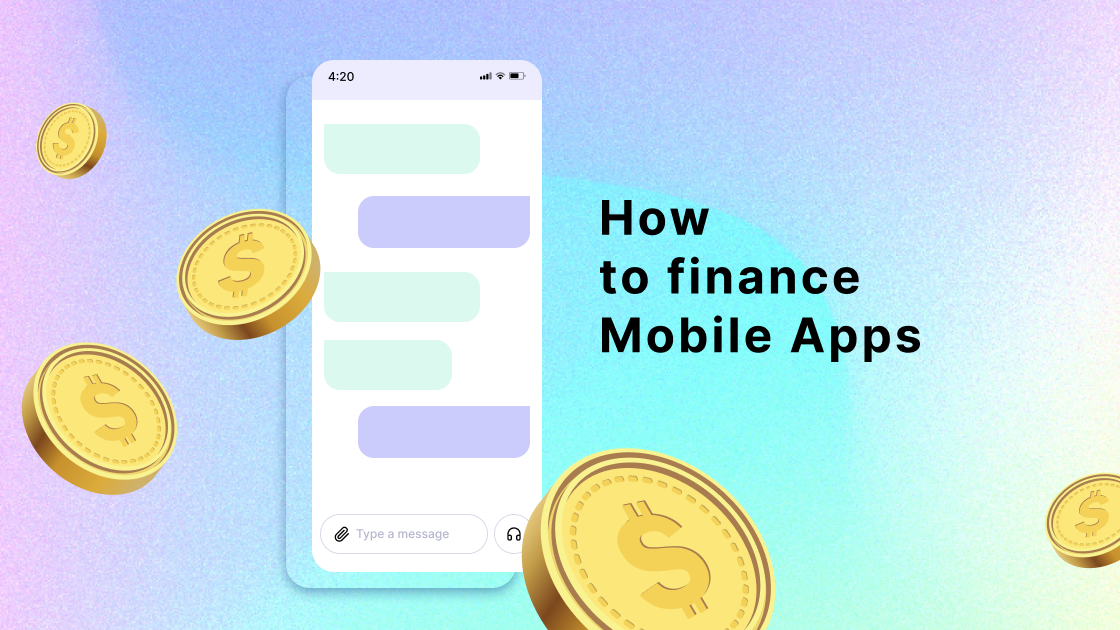Subscription apps and funding options: Purchasely teams up with Karmen, a company specialized in Revenue-Based Financing, to give you some insights.
Subscription Apps: from ideation to scaling
Do you want to become a leading Subscription App with the great Mobile Product or Service you have designed? Please see below another article that would help you deploy a sustainable subscription business model.
Previously, the Purchasely team has published some articles that empower you to kickstart your Subscription App journey.
Now your Subscription App is live on App Store and Google Play, with a very well-defined value proposition, clear prices that are matching willingness to pay from your subscriber target, and the right settings to avoid any technical risk and with a great App Store Optimization strategy. Your subscriber base starts to grow and you are assessing the MRR and the ARR of your first subscriber cohorts. You are wondering if the time has come to initiate a performance marketing strategy and to spend money to generate downloads and acquire subscribers. What are the possibilities if you do not have deep pockets?
To assess the field of financing opportunities, Purchasely teams up with Karmen, a leading company specialized in Revenue-Based Financing to give you some insights regarding the funding options.
Subscription apps and funding options
Building a mobile app is not cheap. It requires a lot of resources, starting with the team of developers building said application. Good news though: smartphones are now a commodity. Developing an app can turn your company into a huge success. To make it big, you need to invest massively into your product and your user acquisition.
But you are faced with the cash flow gap: you need to pay for ads on the Apple App Store and the Google Play store or other paid acquisition channels (programmatic, social networks) long before you are getting the money from Apple and Google (between D+30 and D+60) for your app subscribers. How do you invest in your app then? By securing funding. It is a necessary step to scale your business.
What are your funding options? Well, it depends on your app development stage. At first, when building your MVP and your core team, you can turn to bootstrap, raise some love money (from friends and family), participate in app funding contests or set up a crowdfunding campaign. Those are all viable options that you might want to consider in this early stage. But they won’t be sufficient to make it big in the long run.
How do mobile app founders take their business to the next stage? Most of them raise capital through equity, debt or a mix of both. There is another quiet option: Revenue-Based Financing.
What is the best one? Once again, it depends. Let’s review together what each option means, and in which case it is the best-suited funding solution for your app.
Debt funding: hello banks!
Financing your mobile app with debt means that you take on a loan. The bank gives you the amount you ask for in exchange of monthly payments to reimburse all the money you borrowed, plus an additional interest rate to reward their risk-taking.
On paper, it is an attractive funding option. You keep 100% of the company ownership, it is a non-dilutive solution. Plus, the interests you pay are partly tax-deductible.
IRL, the picture is a bit different though. Banks mostly finance low-risk companies. And most of them do not understand mobile app models yet. They are a bit skeptical about financing intangible solutions. Funding a bakery, they understand. Funding a mobile app, less so. Even if you are able to convince your banker, it takes some valuable time to obtain a loan (think months).
As a result, the entry bar for getting a loan is quite high. You need to have already proven profitability, and a lot of guarantees are needed to secure the funding. They can extend to your personal life. If you go through these barriers, you will have to pay a fixed amount at a fixed date for several months - or years. That can bring some complications if your activity fluctuates.
Debt Funding is a good option when:
Equity funding: becoming a VC-backed company
What is equity funding? Basically, you sell a part of your company ownership in exchange for the funds you need. It rewards the large risk VCs are taking. You won’t have to reimburse the amount you receive.
Investors hope that your company will grow and you will be able to buy them out after several years (or the company will be acquired or make an IPO), making a multiple on their initial investment.
VC funds are the way to go for receiving a large amount of capital. You do not have monthly or yearly payment obligations.
What is the downside? First, it is a time-consuming process. A roadshow takes a lot of time away from your activity. You have to go through several due diligences, it takes months before you receive the funding. If you need capital right away, it is not the answer. In addition, it is a costly option: you lose a part of your company.
Equity Funding is a good solution when:
-
Early-stage product development and marketing - test and learn
-
Building predictive revenue models
-
A large amount of funding
-
Okay with giving up some control and equity
Revenue-Based Financing: turning your future revenue into growth investment
The third option to secure funding for your mobile app is revenue-based financing. It combines advantages from equity and debt financing… without some of their disadvantages. You finance your mobile app by turning your subscriptions into upfront cash.
How does it work?
- You connect your everyday tools to your funding provider, like Karmen: your bank account, your app store connect, your mobile app tools such as Adjust or Purchasely, your accounting software…
- This gives the Revenue-Based Financing company some insights into your company’s financial health and ability to generate future revenue.
- After analysing your performances, they make a funding offer within 48 hours.
- Once accepted, you receive your cash 48 hours later.
- You reimburse the company in monthly installments, with a transparent commission on top of the borrowed amount.
Revenue-Based Financing is an interesting option because you stay in the driver’s seat. You keep 100% of your capital, it is a non-dilutive solution. Plus, you get access to the capital quickly, without necessitating personal guarantees.
In addition, you know from the start the exact amount of your monthly installments. There are no hidden fees. You are not punished if you grow fast, you won’t repay more.
Revenue-Based Financing companies such as Karmen can finance up to 40% of your ARR upfront. It is open for companies from €5k-10k in MRR. And the funding amount gets bigger as your recurring revenues grow. You can take on some additional financing each month if you want/need to.
For mobile apps, Karmen also offers financing for your payment period. Indeed, you have to pay upfront for the development cost of your app but also for the ads to generate traffic and downloads. And revenues from your in-app subscriptions (paid or organic) are paid out by Apple or Google at least 30 days after the subscription starts.
The main limit to Revenue-Based Financing is the amount you can raise. If you need to make massive investments, it can be part of your funding process but it will probably not cover all of it.
Revenue-Based Financing is a great option when:
Debt, equity, revenue-based: how to choose your funding solution?
Finding external sources of funding is a necessary step to scale your subscription app. You have three options to choose from:
The best choice will be the one best aligned with your growth goals. Keep in mind that you can of course combine part or all of these options.
Purchasely customers are operating across 15 categories and are leveraging various financing options.
-
Bootstrapping is often mandatory during the early days of a mobile app.
-
VC money is often raised to develop a company when the product-market fit is here.
-
Revenue-Based Financing with players like Karmen is a new rising solution that may be used when a Subscription App wants to scale at the international level (for example, to enter the US market) or needs to accelerate in front of larger or very well-financed competitors.



